III.The West Coast Gold Rush

The West Coast gold rush was initially focussed on areas rich in alluvial gold around Hokitika (see separate Hokitika page). As it developed it moved further north and inland as gold-bearing reefs were discovered in the Grey River/Mawheranui, Buller and Inangahua valleys.
A last flourish took place at Rimu in the 1880s and was followed by steam-dredging of alluvial gravels from the 1920s to the 1950s.
Currently there is renewed interest in small scale mining operations at Ross (see end page) although the future of the big opencast mines is in doubt.

Reefton
Reefton (formerly 'Reef Town') was called this due to the gold-bearing quartz reefs in the locality. It was also know as 'Quartzopolis'. Major gold finds occurred in 1870 and the town attained a size of a few thousand. It now has a population of 951 mainly employed in the coal and forestry industries.
Quartz mining was a risky business and required capital for the stamping machines to crush the ore-bearing quartz. First started in the Thames region of the Coromandel Peninsula, south of Auckland, it was later taken up at Reefton.

In 1870 the Caledonian Mine Company on the Coromandel struck an exceptionally rich vein of quartz through its 90ft-deep Caledonian shaft .
‘At times there was more gold to quartz in the spoil bought to the surface and the metal clogged the machinery of the stamping battery’ (see Grant, D. 1997 Bulls, Bears and Elephants: A History of the New Zealand Stock Exchange p.29).
Another very successful mine was the Gin and Raspberry Mine in the Cardrona Valley – (so called because of 'the refreshment kept for the miners at the head of the shaft’ ibid. p.27). There is a rather nice folk song about it here.
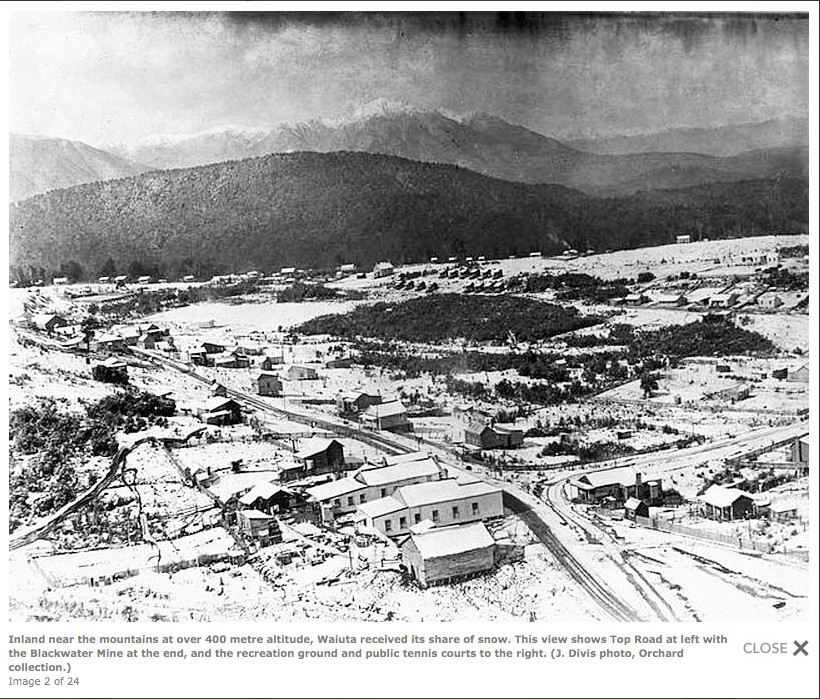
The quartz mining boom in Reefton was more sustained than that in the Coromandel with a lengthy peak from the late 1870s until 1883.
‘From 1872 to 1951 over 4 million tonnes of quartz were mined in the Reefton area, producing 64,700 kilograms of gold. Although there were 59 mines, only 11 produced more than half a tonne.’
As with so many gold finds the first alluvial gold was soon exhausted and increasing amounts of capital were required to mine, stamp and refine the quartz-based ores.
20 kilometres south-west of Reefton on State Highway 7 and 10km from the road at Ikamatua there are the scant remains of the gold ghost town at Waiuta (alt. 400m) which was documented by local photographer, Joe Divis, in the 1930s.
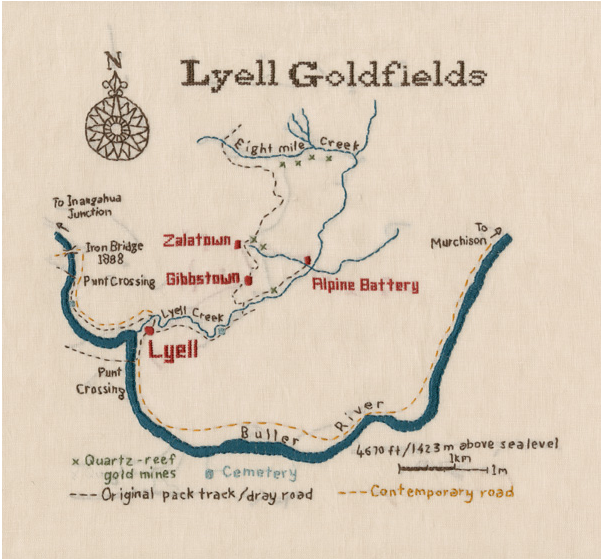
Cornish Connections
Reefton has numerous connections with Cornwall and the Cornish. The town had its own Reefton School of Mines, whose longest serving Director was James Bolitho (1938-1970), a local from Blacks Point who guided the school through the change from gold to coal mining education which lead to a greater reliance on Government Mines Department funding.
‘Blacks Point... is a small settlement rich in cultural history with strong Cornish and Celtic connections dating back to the 1860s. The discovery of gold in Murray Creek, in the Blacks Point hills by the Murray brothers was the spark that set this area alight.’
For the story of the Lawn brothers from Lanner near Redruth in Cornwall who ended up running mines at Reefton see here.
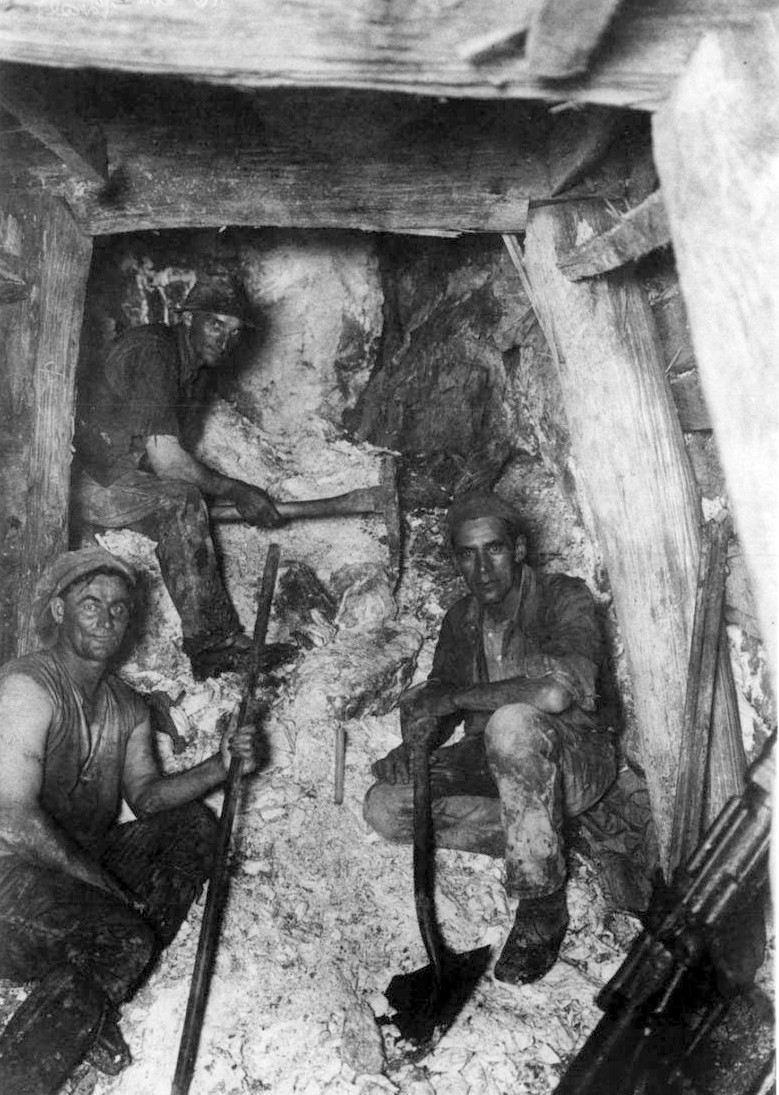
At Īnangahua’s alluvial gold workings Chinese prospectors made up an estimated 40% (715) of the population in 1882 (Te Ara).
Ross
Ross, to the south of Hokitika, was the centre of one of New Zealand’s richest alluvial goldfields in the late 19th century.
With major discoveries in 1864–65 a town soon expanded. The rich gravels and raised beach sand bed soon required mines but drainage problems were always an issue.
New Zealand’s largest gold nugget 2.8 kgs was discovered in Ross. Sadly, King George V, to whom it was gifted, turned it into a tea service.
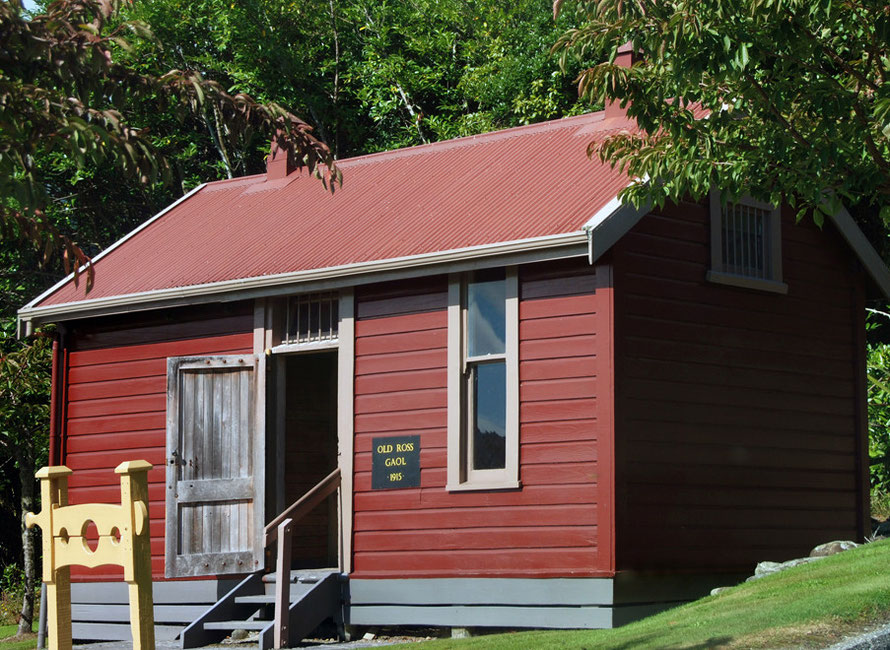
A large opencast pit developed right behind the town in the 1990s is now filled by a lake 70m deep.
Ross is now the centre of considerable renewed prospecting activity by local and international corporate miners (see the bottom of this page).

The Last Gold Rush
Rimu, 5km south west of Hokitika, was the site of New Zealand's last gold rush when gold was discovered in 1882.
A township of 1,800 people was quickly established and drift mines and sluicing were used to work alluvial gold in cemented gravels. In the 1920s giant dredgers arrived to re-work the alluvial flats for gold dust. The last dredger stopped work in 1953.
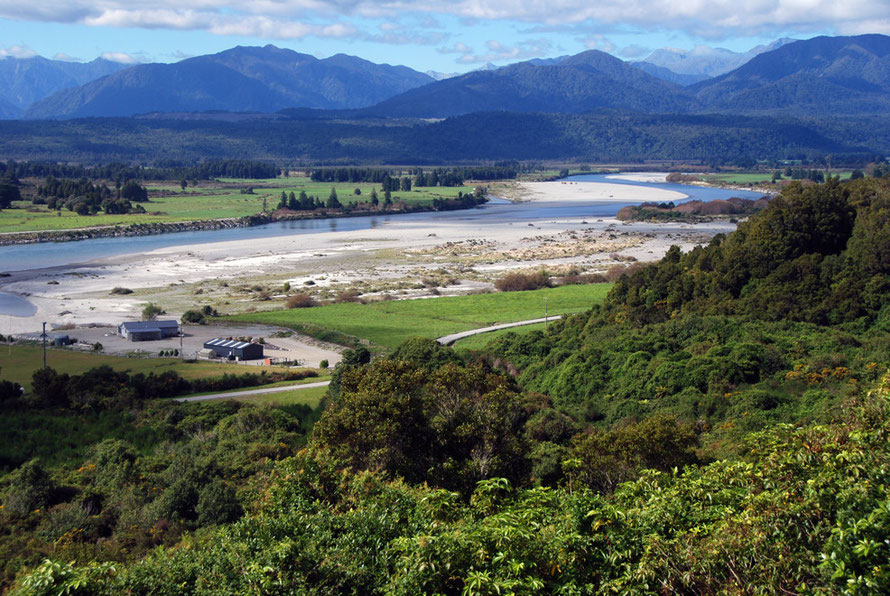

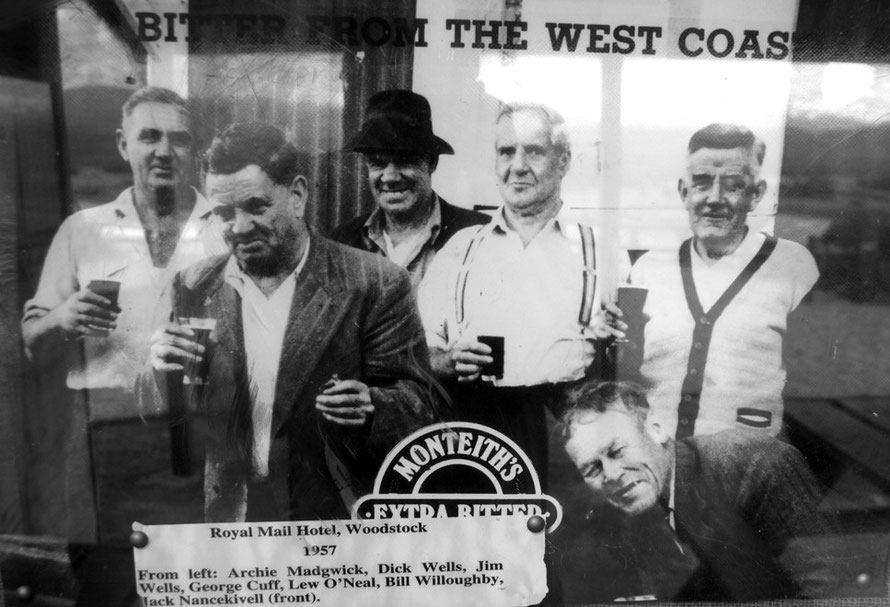
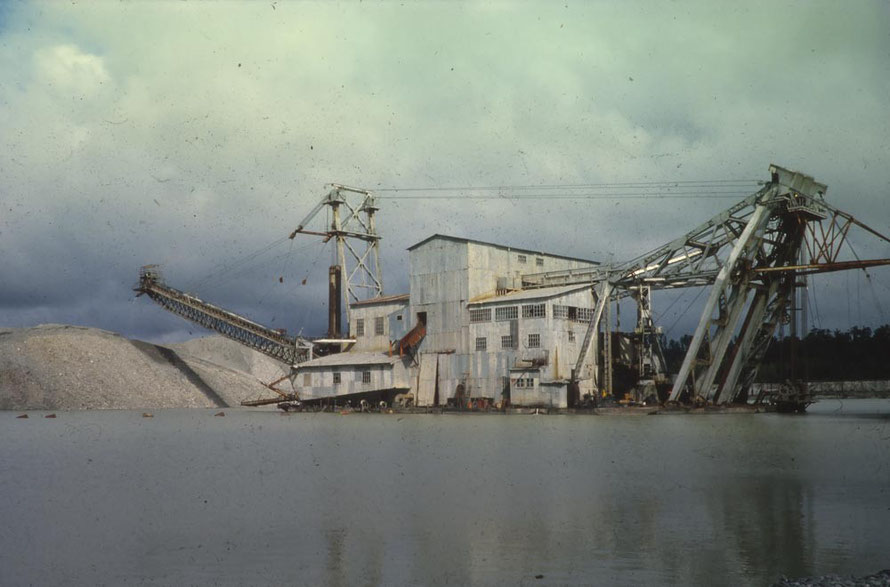
Gold Mining Today
In the 1980s rising gold prices and the development of low grade extraction technologies led to a resurgence of gold mining.
This has given rise to the massive opencast mining operations at Macraes in Otago where gold occurs at 1.6 grams to each tonne of rock removed (University of Otago).
There is an operating gold mine 7km south west of Reefton. This is the Australian OceanaGold Corporation's opencast gold mine. In 2012 this produced 63,000 ounces of gold from 1.3m tonnes of ore and 18m tonnes of total waste mined. (Waste rock is known locally as ‘mullock'.). That equals 306 tonnes of ore and waste per ounce of gold.
In 2013 Oceana announced the mine was to be mothballed in 2015 due to the falling gold price. It employs 260 people. Most of the booming miner's profits now come from the Didipio operation on Luzon in the Philippines. For their latest stellar corporate results see here.
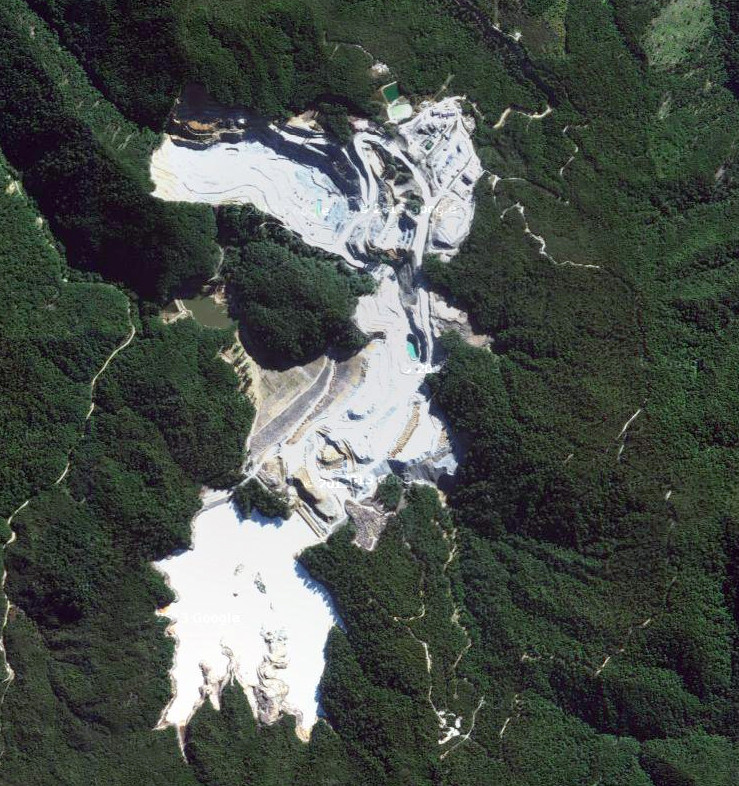
'It's not worth a pinch of shit': the new West Coast prospectors
There is also renewed interest in goldmining the raised beach sands around Ross and Hokitika. Farmers have built their own mini open cast mines like the one as Humphreys Gully which is currently for sale.
A 2010 feature in the New Zealand Herald covered renewed interest in Ross and the prospecting being done by Canadian outfit, Superior Mining International Corporation.
Ross itself is built on substantial gold reserves and were the price right attempts might be made to relocate the entire town. Even the local lumber mill owner at Ruatapu outside Hokitika has started his own little one hectare mine. Photographer Gary Walls who lives in back of the new mine says,
My house is unsaleable at present because of this, it's not worth a pinch of shit.
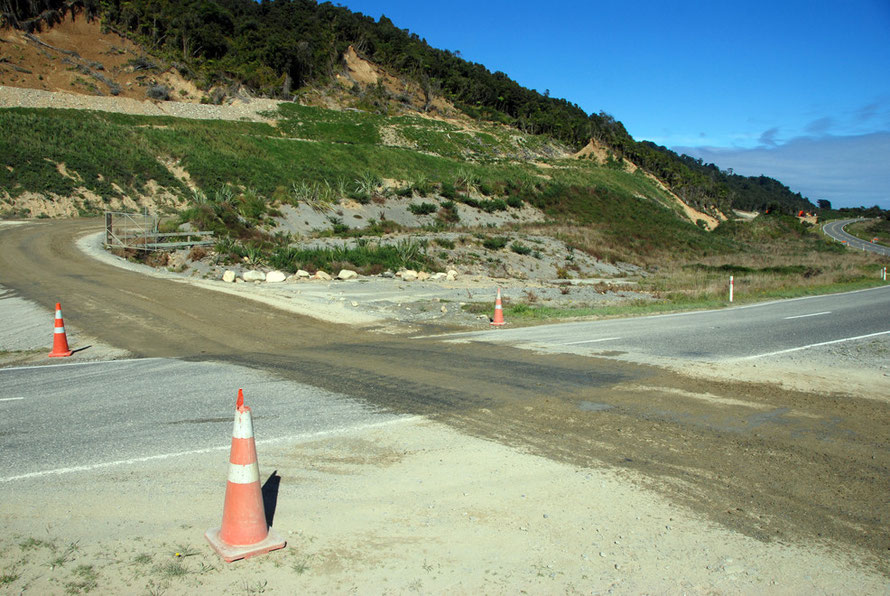
There are also mining operations at Donoghues just before entering Ross. This is where we saw the big Volvo dumper trucks crossing State Highway 6.
There is application in from Birchfield Ross Mining Ltd. You can see the planning application for Resource Consents here at Westland Council. The application is currently on hold (August 2014) according to the Council website.







